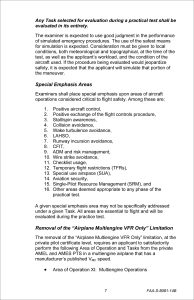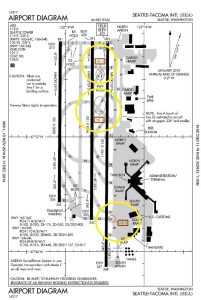If you take a look in the Private Pilot Practical Test Standards you will note a section called “Special Emphasis Areas.” The section lists several areas in relation to aircraft operations that are considered critical to flight safety. It will be the examiners job during a practical test to place special emphasis on each listed area. Therefore, it will be your job to be very familiar with each of the special emphasis areas listed.
Runway incursion avoidance is one of the special emphasis areas listed in the Private Pilot PTS. Airports can be rather confusing, particularly those located in Class C or B airspace. Not all student pilots will get the opportunity to fly into one of these airports with their CFI simply because one may not be located close by. However, if you do get the chance it can be an invaluable learning experience.
An airport located in controlled airspace like C or B caters to a much higher volume of air traffic and aircraft that are much larger in size than your typical trainer or general aviation airplane. You will find the airport surface environments here to be a lot larger in size, consisting of larger runways and taxiways and possibly additional safety features like runway status lights. There will often be more complex intersections with multiple taxiways and converging runways. Navigating an unfamiliar airport can be challenging and stressful even for the most experienced pilots. Mistakes happen and may result in a runway incursion but it is our job as pilots to minimize the risk of this occurring. We do this through proper knowledge and planning.
Pilots learn about airport operations, signs, markings, and general safety practices during training, and while we may know how to read signs and markings it is often not enough to safely operate in a busy, unfamiliar airport environment. Airport diagrams and other helpful airport information can be found in the most current version of the Airport Facility Directory (AF/D) for a particular region. Before operating at an unfamiliar airport, it is important for a pilot to become familiar with that airport by reviewing an airport diagram. Areas on the airport found to be particularly complex and/or confusing will be labeled as HOT SPOTS. Many times accidents, incidents, or runway incursions have been known to occur in these areas and airport diagrams often point them out (see image below). The AF/D will also provide a textual description of each HOT SPOT area listed. Try to pre-plan your expected route to/from the runway and have a good idea of where your final destination is ahead of time. Never be afraid to ask ATC for help; request progressive taxi instructions from the tower and they will assist you with step by step instructions on where to go. ATC would rather spend 5 minutes assisting you to and from the runway than to run the risk of a runway incursion.
Here is a recreation of an actual runway incursion that took place at Charlotte International airport between a CRJ and PC12:
KCLT Runway Incursion Animation
What went wrong here? If you were the pilot of the PC12 what could you have done differently to prevent this from occurring? What resources were available to the pilot that that could have helped him? Let us know in the comments section.
You can also check out the latest issue of the CALLBACK newsletter from the NASA Aviation Safety Reporting System. You will find some great information and report excerpts from actual events.






